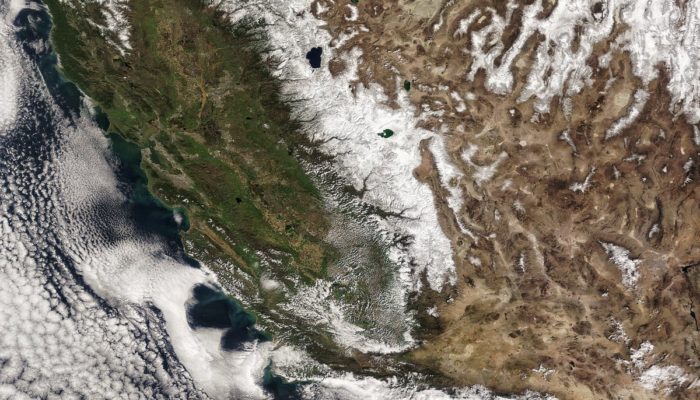
If you Google Pineapple Express you’re likely to end-up with a stoner movie comedy, but for those who live on the West Coast of North America, it has an entirely different meaning. Pineapple Express is a weather phenomenon that refers to a strong atmospheric river that brings heavy rain and moisture to the region. Despite the shared name, the two Pineapple Expresses couldn’t be more different – one is a weather system that can cause significant damage and disruption, while the other is a movie about two men on the run from drug dealers. However, both Pineapple Expresses are known for bringing a lot of “green” – one in the form of lush vegetation, and the other in the form of money. In this article, we will focus on the weather phenomenon of Pineapple Express, exploring what it is, how it works, and the impacts it can have on the Golden State.
Winter 2022/2023 has seen California experience a significant amount of precipitation, with both snow and rain bringing relief from the long and extreme drought that affected the state in the previous years. However, the heavy rainfall also poses a threat to communities living by the rivers due to the risk of flash floods. The primary cause of this shift from drought to greenery is the Pineapple Express, a weather phenomenon characterized by a strong and persistent flow of atmospheric moisture that originates in the tropical Pacific Ocean and moves eastward towards the coast. In this article, we will take a closer look at how the Pineapple Express works and explore the impact it can have on California’s weather patterns and environment.
What is Pineapple Express?
Pineapple Express is a term used to describe a weather phenomenon that occurs during the winter months in the western part of North America. It is a strong atmospheric river that originates near Hawaii, where it picks up large amounts of moisture from the Pacific Ocean. This moist air mass then moves eastward towards the West Coast of North America, bringing with it a lot of precipitation. Need more information? The best source is the NOAA website.
How does Pineapple Express work?
Pineapple Express is caused by a combination of factors, including a strong high-pressure system in the eastern Pacific Ocean and a low-pressure system in the Gulf of Alaska. This creates a channel of strong winds that pushes the warm, moist air from Hawaii towards the West Coast. As the moist air mass moves over the colder ocean water along the West Coast, it cools, causing the moisture to condense and form clouds. These clouds can release huge amounts of rain, often resulting in flooding and landslides in areas that are prone to such hazards.
What are the impacts of Pineapple Express?
The impacts of Pineapple Express can be significant and long-lasting. Heavy rains can cause flooding, landslides, and debris flows that can damage infrastructure, homes, and businesses. The strong winds associated with Pineapple Express can also cause power outages and damage to buildings and trees.
In addition to these immediate impacts, Pineapple Express can also have longer-term effects on the environment. The heavy rains can lead to soil erosion and loss of nutrients, which can affect agricultural production and damage ecosystems. The flooding can also wash pollutants into rivers and streams, affecting water quality and aquatic life.
Pineapple Express is a unique weather phenomenon that can bring heavy rains and strong winds to the West Coast of North America but it belongs to the class of Atmospheric Rivers: carriers of moisture from the tropics to mid-latitudes that happens elsewhere in the world, even in Europe. While atmospheric rivers can be a welcome source of precipitation in areas that suffer from drought, they can also cause significant damage and disruption. The role of climate change in these phenomena is currently under investigation. Understanding the causes and impacts of Pineapple Express and other atmospheric rivers is crucial for communities to prepare and respond to its effects.
